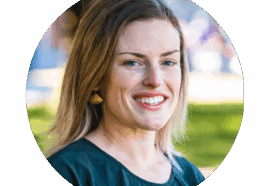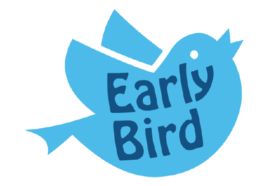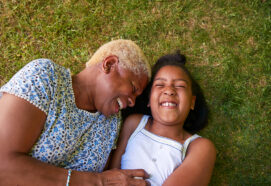In each LASER SIG newsletter, we focus on a different professional role. In this edition and Gillian Davies and Christian Boakye give insider accounts of the role of Speech and Language Therapists.
This article forms part of the LASER SIG Newsletter March 2020.
Gillian Davies works across Lambeth and Southwark boroughs in London as a Senior Specialist Speech and Language Therapist in the Evelina London Community Speech and Language Therapy service (Guy’s and St Thomas’s NHS Foundation Trust). She is based within the Autism and Related Disorders (ARD) service, Community Complex Feeding service and a secondary school for adolescents with Learning Disability (LD), some of whom also have Autism Spectrum Disorder (ASD). She is also involved with service development projects, which includes gathering parent/ child feedback and sharing findings.
Gillian tells us about her role
Since graduating with a BSc in Speech Pathology and Therapy, I have worked with children and young people (CYP) with speech, language and communication needs (SLCN) in clinics, child development centres, mainstream schools, resource bases, and specialist school settings. Speech and Language Therapists work on assessing and developing communication skills, and the aim is to develop functional communication using an individual’s most effective modality. If spoken language is not accessible, alternative forms of communication will be considered, which could include signing, or the use of objects, pictures or symbols. Speech and Language Therapists may also work on eating and drinking, to ensure a safe swallow and maximise nutritional intake, and possibly aiming to reduce anxiety and aversions related to food textures. Working with CYP with complex developmental needs requires specialist post-graduate training, and I have completed training in the Autism Diagnostic Observation Schedule-Second Edition (ADOS-2), Post-Graduate Dysphagia and Sequential Oral Sensory Approach to Feeding. I have also recently completed an MSc in Language and Communication Impairment in Children.
What is a typical day for you?
Every day is different! Working with a variety of professionals involves having a flexible, open approach, listening to and valuing other’s contributions and opinions, and actively participating and contributing to the teams. Multidisciplinary team working enables me to consider communication, or feeding, within the context of the whole child and the wider family, and take all factors contributing to a child’s presentation into account, as well as protective and compounding factors. This allows for differential diagnoses, and holistic care plans to be developed, to maximise progress. I use strategies including solution-focused questions or coaching techniques to gain insight into a parent or caregivers’ understanding of their child’s needs, to underpin recommendations and inform intervention plans.
Autism and Related Disorders Service (ARD)
The ARD service uses gold-standard diagnostic assessments and in these clinics, I administer the ADOS-2 while the paediatrician completes a developmental history with the parent. As well as assessing communication development during the ADOS-2 assessments, Speech and Language Therapists are uniquely placed to assess features of structural language disorder including grammatical errors, difficulties with sentence formulation, and word finding difficulties. I maintain a calm and approachable manner to put children at ease and encourage their best communication and interaction.
The ARD service provides support to parents in the form of twice-monthly workshops. Post-diagnosis workshops cover more general information about ASD and are aimed towards families following diagnosis, or who would like signposting to local services. Topic-based workshops focus on areas including early communication, attention, mental health, behaviour. We cover the theory, and consider challenges faced by families, before discussing strategies and supporting parents to problem-solve and identify approaches which may be helpful. The groups are usually well-attended and the discussions are varied and unpredictable, which has helped me understand the value of these opportunities for parents to share their thoughts, feelings and opinions. I am increasingly able to ‘go with the flow’ in order to provide an open and safe space for these discussions, which has subsequently helped me manage difficult conversations in other situations. Parents often provide support and advice to each other, which can be more accessible and meaningful than when it comes from a professional, and it is heartening to enable this to happen.
The Feeding Service
The Feeding service assesses and provides intervention for CYP with restricted eating and aversive responses to sensory aspects of food. Approximately 50% of the CYP seen in this clinic have ASD, and may or may not have LD. Each professional in the team (Paediatrician, Dietitian, Clinical Psychologist, Occupational Therapist and Speech and Language Therapist) is directly involved in the hour-long assessment. The Speech and Language Therapy role is to informally assess, through observation and play, the child’s communication level and response to a variety of food. If they eat anything, their oral motor skills and swallow are also assessed. An action plan is agreed with parents which may involve a parent workshop, a home or school visit, or ‘food school’ therapy sessions. Therapy involves supporting children and their families to progress through the steps to eating including tolerating, looking, touching, and smelling food, before eating. This is done through play with accepted food and gradually introducing items linked by colour or shape. I am always impressed by families’ efforts and appreciate their pleasure when their child explores (or tastes!) a new food.
Secondary School work
My role in the secondary school involves working collaboratively with Teaching Assistants, Class Teachers and the school’s SENCO (Special Educational Needs Co-ordinator), delivering training, assessing the communication environment and the communication needs of students, as well as planning, providing and evaluating intervention, with the support from teaching staff. In this context, communication can often manifest through behaviour which challenges, particularly for students who do not have a functional communication system, or for those with emotional regulation needs impacting on their expressive communication.
Part of the Speech and Language Therapy role is to support teaching staff to understand the purpose of behaviour by using strategies such as ABC (antecedent, behaviour, consequence) charts, and identifying environmental adaptations required to maximise communication, or any new communication skills the student may need to learn. Working in schools helps me understand the educational demands on students with learning needs, and the importance of effective communication to access learning opportunities.
What are the challenges?
True multidisciplinary working can be challenging, due to a range of factors such as timetabling/ working patterns, budget constraints, and waiting times. Managing parental understanding of their child or young person’s stage of development can be difficult particularly when considering expectations related to progress and outcomes. Developing and maintaining the understanding that children and young people with speech, language and communication needs (SLCN) should be targeted within every day, functional experiences not isolated to the work of a Speech and Language Therapist, is also a challenge. I am mindful of the vocabulary I use when talking to families and I avoid using jargon or technical terms.
What makes the role worthwhile?
Working with families and empowering them to understand and independently manage their child or young person’s needs is extremely rewarding. Supporting parents to identify strategies and ideas they can implement at home, and seeing individual progress, as well as increasing the confidence of families, makes surmounting the barriers worthwhile. I am interested in the service development side of Speech and Language Therapy within neurodevelopmental conditions and, alongside Paediatricians, Clinical Psychologists and Educational Psychologists, I have been involved in planning and putting a bid together for funding to develop a community LD pathway. Similarly, I work closely with the Speech and Language Therapy Developmental Language Disorder (DLD) team to consider how the DLD assessment, diagnostic and intervention pathways link to the ARD service, and how they potentially link to a future LD pathway. I am hopeful of a more streamlined approach between services and teams to improve the experiences and outcomes of the CYP we work with.



Discussion
Very much enjoyed reading this.Gillian.
So helpful to all concerned.